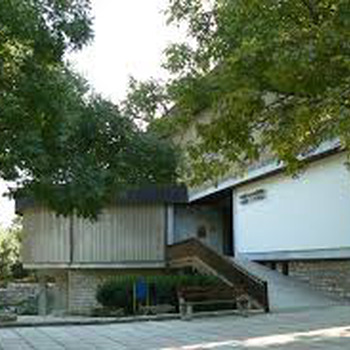Roman amphitheater Devnya
Overview
Marcianopol was built on the site of an old Thracian settlement at the Devnya springs, after the Second Dacian War (ended in 106), by Mark Ulpius Trajan (98-117). It is believed that the emperor named the city in honor of his sister Marcia. According to Praetorian inscriptions found in Rome, the city also bore the emperor's father's name - Ulpius (Ulpia Marcianopolis). After its founding, the city became an important strategic center. Until 187-193. Marcianopol belonged to the province of Thrace with the capital Philipopolis (Plovdiv), and then to the province of Lower Moesia with the capital Tomis (Constanta, present-day Romania). Marcianopol reached a high economic and cultural heyday during the dynasty of the North (193-235), when he minted his own bronze coins. In the second half of the 3rd century the city was repeatedly attacked by the Goths and other barbarian tribes, after which it was rebuilt. of the six provinces of the diocese of Thrace - part of the Eastern Prefecture. In the 4th century the importance of the city increased at the expense of Odessos (now Varna), as a fortified center on the shortest road from the Danube to the new capital of the empire - Constantinople. The invasion of the Avars and Slavs at the end of the 6th century and the beginning of the 7th century did not pass Marcianopol. During the attacks of the Avars in 614-615 the city was finally destroyed and abandoned. The name of Marcianopol was last found in Theophylact Simokata in 596 in connection with the Slavic attacks during the reign of Emperor Maurice (582-602). After the arrival of the Slavs and the founding of the Bulgarian state, Marcianopol no longer existed and was not mentioned anywhere else except in the Diocesan lists as a metropolitan seat. Probably with the permanent settlement of the Slavs in those in the VII century the settlement received a new name - Devina. It is assumed that this name has Indo-European origin and comes from the pre-Roman-Thracian name of Devinska river - "devina" (spring, stream, current). The existence of a settlement named Devina in the Middle Ages is confirmed by a number of written records in which it appears in various forms. The written information of the medieval authors is confirmed by the archeological excavations - in the outlines of the Roman amphitheater, at a level higher than its foundations, the remains of a small early Bulgarian fortress were found. The construction of the fortification is connected with the fortress construction of Khan Omurtag (816-831). It has also been found that in the 10th or early 11th century the fortress was extended to the north. After the fall of Bulgaria under Ottoman rule at the end of the 14th century, the fortress was destroyed and abandoned and the settlement was moved to the west, on the ridge of the Provadia plateau.
Recommended
- Petrich Kale Fortress
- The Devnya springs
- Historical park
- Rock monastery in the Shashkanite area
- Tourist complex Barite
- Neolithic settlement historical complex
- Museum of mosaics


 Bulgarian
Bulgarian Romanian
Romanian

